- TOP
- Mirror with Plum Blossom and Birds
Overview
Mirror with Plum Blossom and Birds
- Museum No.
- EK17-26
Showing 1-6 of 1
| Title | Mirror with Plum Blossom and Birds |
|---|---|
| Designation | |
| Artist | |
| Category | Metalwork(E), Bronze Mirrors |
| Country | Japan |
| Period | Kamakura |
| Century | 13th |
| Year | |
| Quantity | |
| Materials | |
| Dimensions | Diameter 11.5cm Rim height 0.85cm Rim width 0.3cm |
| Inscription by | |
| Signature/Seals Etc | |
| Donor |
Included Works

EK17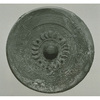 Mirror with Abstract Animals in Band
Mirror with Abstract Animals in Band
EK17-1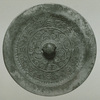 Mirror with Whirlpool Design
Mirror with Whirlpool Design
EK17-2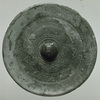 Mirror with Flower Design and Seven Arcs
Mirror with Flower Design and Seven Arcs
EK17-3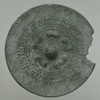 Mirror with Five Animals
Mirror with Five Animals
EK17-4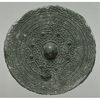 Mirror with Abstract Animals in Band
Mirror with Abstract Animals in Band
EK17-5 Mirror with Four Animals
Mirror with Four Animals
EK17-6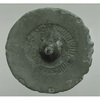 Mirror with Tooth Comb Pattern
Mirror with Tooth Comb Pattern
EK17-7 Mirror with Abstract Animals in Band
Mirror with Abstract Animals in Band
EK17-8 Mirror with Pines and Cranes
Mirror with Pines and Cranes
EK17-9 Mirror with Cranes and Pines and Butterflies
Mirror with Cranes and Pines and Butterflies
EK17-10 Mirror with Arabesque and Phoenixes
Mirror with Arabesque and Phoenixes
EK17-11 Mirror with Chrysanthemums and Birds
Mirror with Chrysanthemums and Birds
EK17-12 Mirror with Chrysanthemums, Butterflies, and Birds
Mirror with Chrysanthemums, Butterflies, and Birds
EK17-13 Mirror with Globeflowers and Flying Sparrows
Mirror with Globeflowers and Flying Sparrows
EK17-14 Mirror with Chrysanthemum Branches and Flying Sparrows
Mirror with Chrysanthemum Branches and Flying Sparrows
EK17-15 Mirror with Autumn Plants, Butterflies, and Birds
Mirror with Autumn Plants, Butterflies, and Birds
EK17-16 Mirror with Cranes and Pine Needles
Mirror with Cranes and Pine Needles
EK17-17
This object may be one within a set or the title of a set. To see all objects in the set, perform a Category Search by the Museum Number below, entering numerals only before the hyphen.

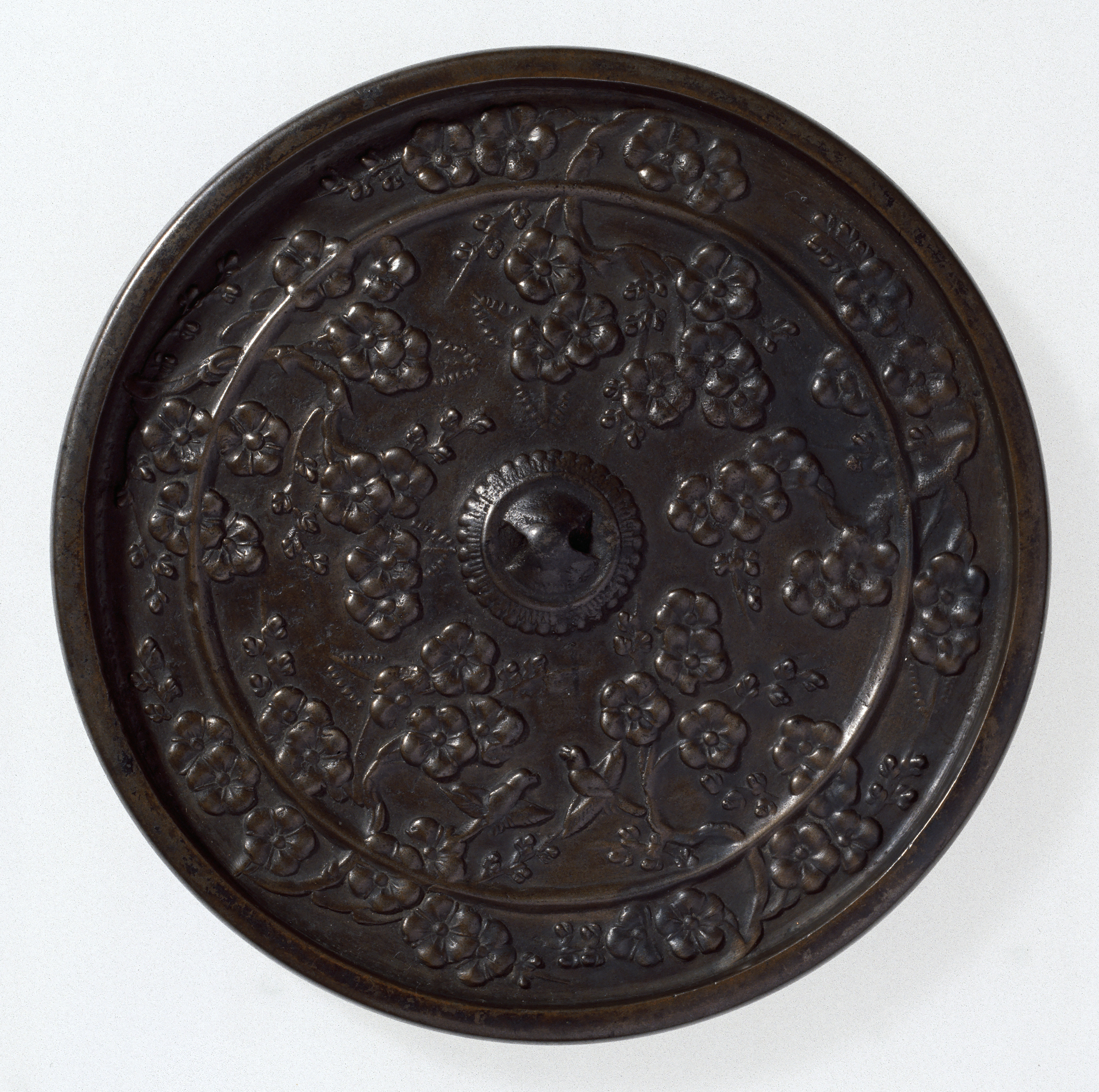





The body of this unusually thick mirror is approximately 3 mm and is dark brown in color, and its reflective face is plated with tin. The inner surface of the medium-sized, straight-sided rim (on the image to the right) is rough with spots, where the pattern is unclear, apparently, flaws caused during the casting. The knob surround, in the form of flower pistils, spread out around the knob. The rare design composition features five blossoming plum trees branching inward from the outer area of the pictorial space. The motif of a pair of small birds facing each other in either the upper or lower part became standardized in the latter half of the Kamakura period (1185-1333).
This mirror bears the branches and leaves typically associated with plum blossoms, but the flowers are indistinguishable from kerria blossoms (J., yamabuki), and in places the leaves, too, take the form of kerria leaves. During the transitional stage when plum blossoms were first represented on mirrors, some confusion arose between them and kerria blossoms. It is thus impossible to definitively distinguish between the two on Kamakura-period mirrors. In general, when the trunk of the tree is depicted, it is referred to as a plum tree.
Japan-Kamakura